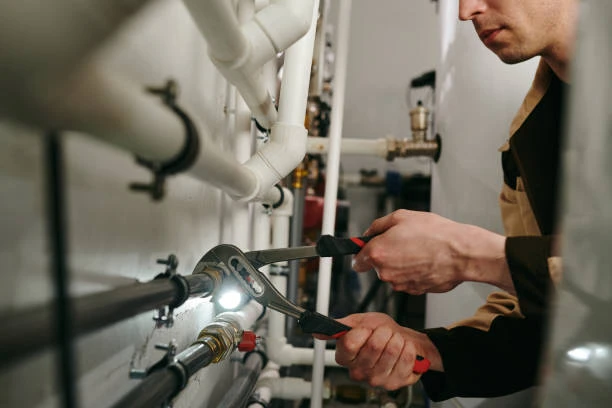PPR pipe and fitting have become essential in modern plumbing and piping systems, replacing traditional materials with their durability, lightweight design, and corrosion resistance. This article explores the ten most frequently asked questions about PPR pipe and fittings, delving into their features, applications, installation, and benefits for both residential and industrial uses.
1. What Are PPR Pipes and Fittings?
PPR pipe and fitting are made from a unique type of plastic called polypropylene random copolymer. Known for their resilience, they are widely used in plumbing and piping systems for transporting hot and cold water, as well as in various other applications, including industrial transport of chemicals. PPR’s ability to withstand high temperatures and pressure without degrading makes it a preferred choice in plumbing.
2. What Are the Main Benefits of PPR Pipes Over Traditional Materials?
PPR pipe and fitting offer several advantages over traditional materials like copper, steel, or PVC. Key benefits include:
- Corrosion Resistance: PPR pipes resist corrosion, even in harsh environments, which extends their lifespan and ensures water quality.
- Lightweight and Easy Installation: PPR is much lighter than metal, making it easier to handle and install.
- High Thermal Resistance: Suitable for both hot and cold water applications, PPR can withstand temperatures up to 95°C without damage.
- Eco-Friendly: PPR is non-toxic, fully recyclable, and contributes to reducing waste.
3. Where Are PPR Pipes Commonly Used?
PPR pipes are versatile and used across various sectors:
- Residential Plumbing: Ideal for home plumbing systems for hot and cold water.
- Industrial Applications: Often used to transport chemicals, gases, and high-pressure fluids.
- Heating and Cooling Systems: Widely used in underfloor heating and cooling applications.
4. How Are PPR Pipes Installed?
Installing PPR pipes involves using a specialized welding tool that heats and fuses the pipe and fittings together. The steps include:
- Cutting the Pipe: Cutting the pipe to the required length.
- Heating the Pipe and Fitting Ends: A fusion tool heats both ends.
- Joining and Holding: The heated ends are pressed together until they fuse.
This process creates a leak-proof seal, essential for plumbing applications.
5. Are PPR Pipes Suitable for Hot Water Systems?
Yes, PPR pipes are highly suitable for hot water systems. Thanks to their thermal resistance, they can safely transport hot water up to 95°C without deforming or leaking. This feature makes them particularly useful for homes, commercial buildings, and industrial applications where hot water transport is essential.
6. How Long Do PPR Pipes and Fittings Last?
PPR pipe and fitting can last up to 50 years if properly installed and maintained. Their longevity is due to their resistance to corrosion, temperature variations, and mechanical wear, making them a long-term solution for plumbing and piping needs.

7. How Do PPR Pipes Compare to PVC Pipes?
While both PPR and PVC are popular in plumbing, they differ significantly:
- Thermal Tolerance: PPR is more suited for hot water applications, whereas PVC is primarily used for cold water.
- Durability: PPR’s resistance to high pressure and heat makes it longer-lasting than PVC in demanding applications.
- Installation Process: PPR requires a fusion welding process, which is simpler than the solvent cementing needed for PVC.
8. What Makes PPR Pipes Eco-Friendly?
PPR pipes are eco-friendly for several reasons:
- Recyclable Material: PPR is recyclable, reducing environmental impact.
- Non-Toxic Composition: PPR does not release harmful chemicals, making it safe for potable water systems.
- Longer Lifespan: The durability of PPR reduces the need for replacements, leading to less waste over time.
9. Are PPR Pipes Resistant to Chemicals?
Yes, PPR pipes have a high resistance to a wide range of chemicals, which makes them ideal for transporting various industrial substances, including acids and alkalis. This chemical resistance ensures the pipes remain durable and functional, even in harsh industrial environments.
10. What Is the Global Demand for PPR Pipes and Fittings?
The global demand for PPR pipes and fittings has been on the rise, driven by growth in the construction and industrial sectors. With increasing urbanization and infrastructure developments, especially in regions like Asia and the Middle East, PPR pipes have seen widespread adoption due to their durability, efficiency, and eco-friendly profile.
Conclusion
PPR pipe and fitting are revolutionizing the plumbing industry with their durability, versatility, and eco-friendly properties. They offer a practical and sustainable solution to traditional plumbing materials, making them ideal for both residential and industrial applications. With high resistance to heat, corrosion, and chemicals, PPR fittings continue to grow in popularity worldwide.
FAQs
- What temperatures can PPR pipes handle?
PPR pipes can handle temperatures up to 95°C, making them suitable for both hot and cold water applications. - Is PPR suitable for outdoor installations?
Yes, PPR pipes can be used outdoors, but they should be shielded from direct UV exposure to prevent material degradation. - Can PPR pipes be used for drinking water?
Absolutely, PPR is non-toxic and safe for drinking water systems, making it a preferred choice for residential plumbing. - Are PPR pipes suitable for industrial use?
Yes, their chemical and thermal resistance makes PPR pipes ideal for transporting various industrial substances. - Do PPR pipes require maintenance?
PPR pipes are low-maintenance, but periodic inspections can ensure their longevity and optimal performance.